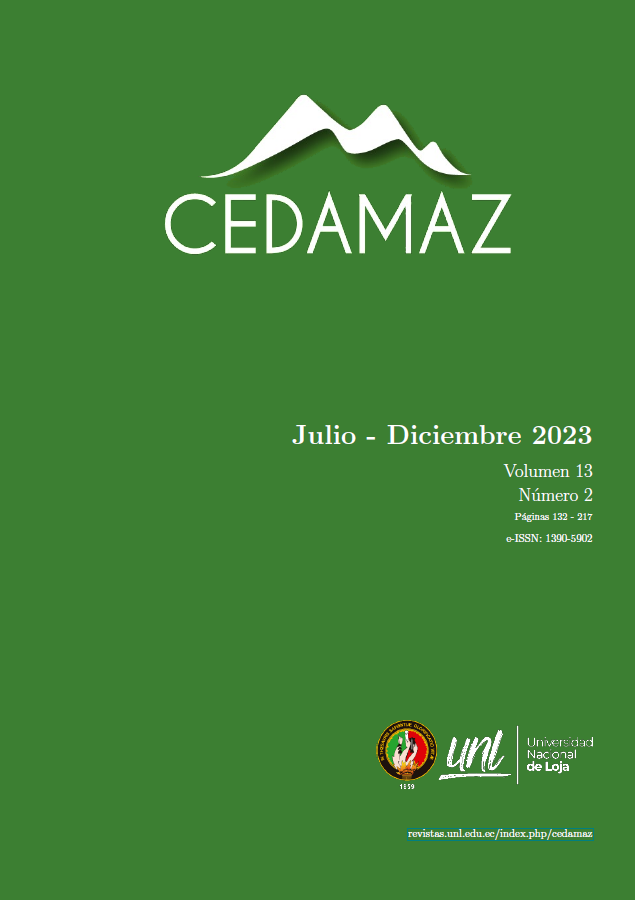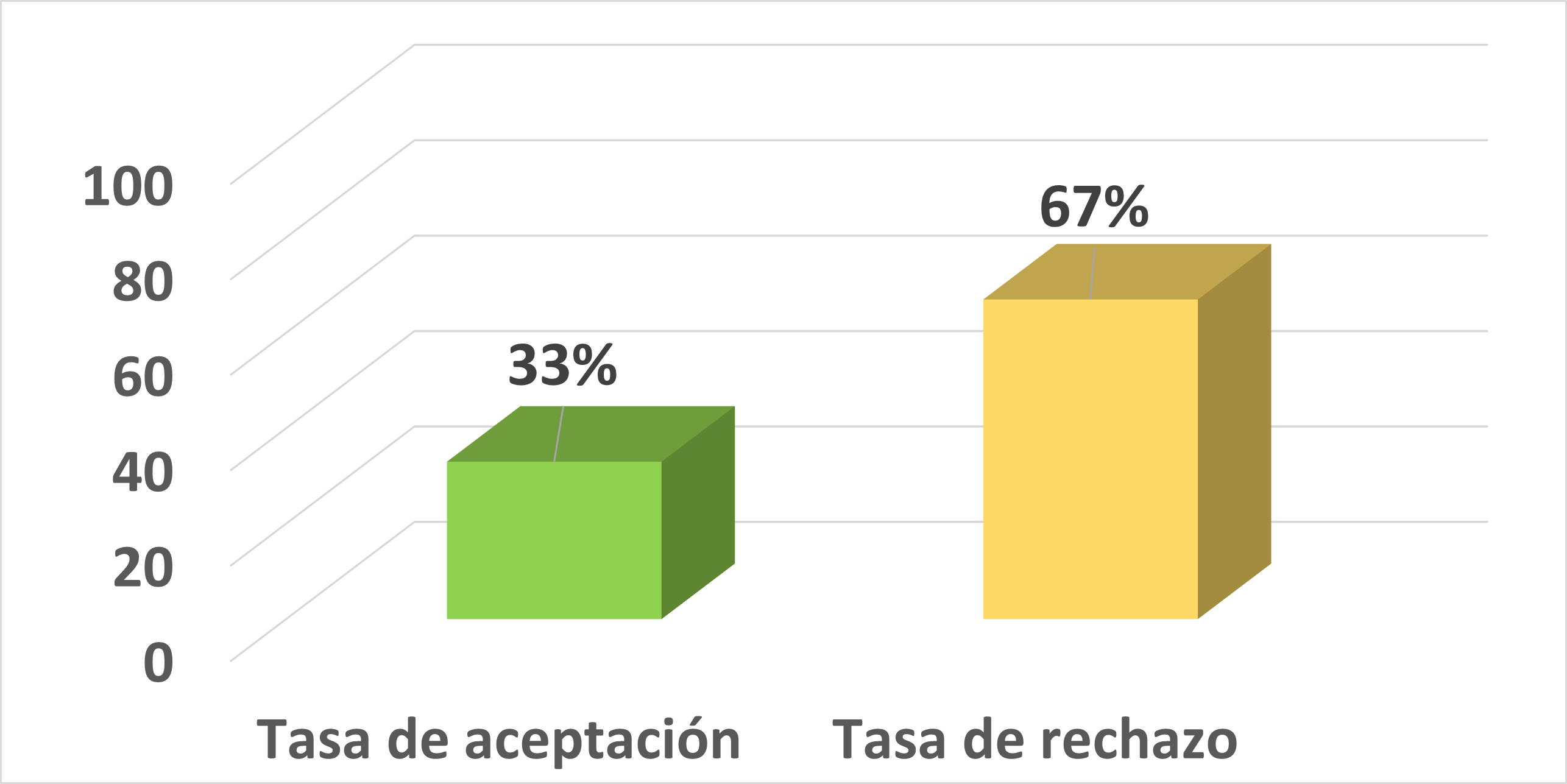The Tourist Carrying Capacity of the "Liguiqui" and "El Murcielago"
DOI:
https://doi.org/10.54753/cedamaz.v13i2.2025Keywords:
Carrying capacity, Environmental impacts, Environment, ManagementAbstract
Tourist carrying capacity (TCC) is an essential multidisciplinary concept for the planning and sustainable management of tourism in destinations. In this investigation, the TCC was addressed in the El Murciélago and Ligüiqui beaches of the Manta Canton, Ecuador. The study focused on evaluating the reception capacity considering physical, environmental and management factors. The methodology included the calculation of the Physical, Real and effective loading capacity, considering dimensions of the beaches, environmental factors such as erosion, flooding and precipitation; and management aspects such as infrastructure, equipment and personnel. The results indicated that El Murciélago has a greater physical load capacity due to its greater extension, as well as a greater real load capacity by presenting a lower proportion of eroded areas. Regarding effective capacity, El Murciélago is more complete in infrastructure and services, allowing it to receive a higher proportion of visitors compared to Ligüiqui. The conclusions highlight that, considering both natural and management aspects in tourism planning, El Murciélago beach has the highest TCC. It is suggested that addressing erosion and improving the infrastructure in Ligüiqui could increase its capacity. The results of this research provide vital information for tourism sustainability on both beaches.References
Alcívar Vera, I. I., & Mendoza Mejía, J. L. (2020). Modelo de Gestión del Turismo Comunitario orientado hacia el desarrollo sostenible de la comunidad de Ligüiqui en Manta, Ecuador. ROTUR. Revista de Ocio y Turismo, 14(1), 1–22. https://doi.org/10.17979/rotur.2020.14.1.5849 DOI: https://doi.org/10.17979/rotur.2020.14.1.5849
Aylen, J., Albertson, K., & Cavan, G. (2014). The impact of weather and climate on tourist demand: The case of Chester Zoo. Climatic Change, 127(2), 183–197. https://doi.org/10.1007/s10584-014-1261-6 DOI: https://doi.org/10.1007/s10584-014-1261-6
Chen, C.-L., & Teng, N. (2016). Management priorities and carrying capacity at a high-use beach from tourists’ perspectives: A way towards sustainable beach tourism. Marine Policy, 74, 213–219. https://doi.org/10.1016/j.marpol.2016.09.030 DOI: https://doi.org/10.1016/j.marpol.2016.09.030
Cifuentes, M. (1992). Determinación de Capacidad Turística en Áreas protegidas. Turrialba, Costa Rica. Turrialba, Costa Rica: Ed. Centro Agronómico Tropical de Investigación y Enseñanza (CATIE).
Cornejo Ortega, J. L., Chávez Dagostino, R. M., & Bravo Olivas, M. L. (2019). Capacidad de Carga Turistica de la Playa punta perula y playa Isla Cocinas Como Estrategia para un uso Turístico sustentable. Revista Cimexus, 14(2), 11–26. https://doi.org/10.33110/cimexus140201 DOI: https://doi.org/10.33110/cimexus140201
Danely Poot, M., & Segrado, R. (2019) Tendencias de investigación científica en la capacidad de carga turística. Revista Turydes: Turismo y Desarrollo, 26. https:// www.eumed.net/rev/turydes/26/carga-turistica.html
DatosMundial.com. (14 de agosto de 2023). Hora de amanecer y atardecer en Ecuador. (n.d.). https://www.datosmundial.com/america/ecuador/puestadel-sol.php freemeteo.ec. (14 de agosto de 2013). Manta – historialmeteorológico mensual. https://freemeteo.ec/eltiempo / manta / historia / historial -mensual /?gid = 3654410& ; station = 23038& ; month =1&year=2021&language=spanishar&country=ecuador
De Paula, D. P., Lima, J. C., Barros, E. L., & Santos, J. de. (2021). Coastal erosion and tourism: The case of the distribution of tourist accommodations and their daily rates. GEOGRAPHY, ENVIRONMENT, SUSTAINABILITY, 14(3), 110–120. https://doi.org/10.24057/2071-9388-2021-018 DOI: https://doi.org/10.24057/2071-9388-2021-018
Félix, A., Montalván, P., Morales, M., & Párraga, Y. (2022). El Turismo comunitario como apuesta de diversificación en destinos sol y playa. caso de la comuna ancestral de Ligüiqui. Manta - Ecuador. ROTUR. Revista de Ocio y Turismo, 16(1), 100–118. https://doi.org/10.17979/rotur.2022.16.1.8603 DOI: https://doi.org/10.17979/rotur.2022.16.1.8603
Fernández, J. M., & Bértola, G. R. (2014). Capacidad de Carga Turística de las playas del partido de mar chiquita, Provincia de Buenos Aires, Argentina. Revista Ciencias Marinas y Costeras, 6(0). https://doi.org/10.15359/revmar.6.4 DOI: https://doi.org/10.15359/revmar.6.4
Figueroa, F., & Molina, M. (2018). Estudio de capacidad de carga turística en la playa los frailes del Parque Nacional Machalilla (Tesis de Grado, Universidad Estatal del Sur de Manabí).
GAD Manta. (17 de enero de 2023). PDYOT 2035. manta. gob.ec. https://manta.gob.ec/pdyot-2035/
Gálvez-Izquieta, P. C., & Mendoza-Tarabó, A. E. (2020). Capacidad de Carga Turística Como Herramienta para el Desarrollo sostenible de playas: Caso Montañita, Provincia de Santa Elena, Ecuador. Empresarial, 14(1), 1–7. https://doi.org/10.23878/empr.v14i1.171 DOI: https://doi.org/10.23878/empr.v14i1.171
Griggs, G., & Reguero, B. G. (2021). Coastal adaptation to climate change and sea-level rise.Water, 13(16), 2151. https://doi.org/10.3390/w13162151 DOI: https://doi.org/10.3390/w13162151
James, R. J. (2000). From beaches to beach environments: Linking the ecology, human-use and management of beaches in Australia. Ocean & Coastal Management, 43(6), 495–514. https://doi .org/10 .1016/s0964-5691(00)00040-5 DOI: https://doi.org/10.1016/S0964-5691(00)00040-5
Long, C., Lu, S., Chang, J., Zhu, J., & Chen, L. (2022). Tourism environmental carrying capacity review, hotspot, issue, and prospect. Int. J. Environ. Res. Public Health, 19(24), 16663. https://doi .org/10 .3390/ijerph192416663 DOI: https://doi.org/10.3390/ijerph192416663
López-Dóriga, U., Jiménez, J. A., Valdemoro, H. I., & Nicholls, R. J. (2019). Impact of sea-level rise on the touristcarrying capacity of Catalan Beaches. Ocean & Coastal Management, 170, 40–50. https://doi.org/10.1016/j.ocecoaman.2018.12.028 DOI: https://doi.org/10.1016/j.ocecoaman.2018.12.028
Mangano, S. (2005). El turismo en los espacios naturales protegidos. Análisis de los objetos de consumo turístico y del comportamiento de los turistas en los parques naturales de Liguria [Tesis de Doctorado, Universidad de Girona]. https://www.tdx.cat/bitstream/handle/ 10803/7911/tsm.pdf?sequence=3
Marshall, B., Cardon, P., Poddar, A., & Fontenot, R. (2013). Does sample size matter in qualitative research?: A review of qualitative interviews in is research. Journal of Computer Information Systems, 54(1), 11–22. https://doi.org/10.1080/08874417.2013.11645667 DOI: https://doi.org/10.1080/08874417.2013.11645667
Mason, P. (2008). Tourism impacts, planning and Management. Butterworth Heinemann.
Mehranian, H., & Marzuki, A. (2018). Beach users’ perceptions toward beach quality and crowding: A case of Cenang Beach, Langkawi Island, Malaysia. Sea Level Rise and Coastal Infrastructure. https://doi.org/10.5772/intechopen.76614 DOI: https://doi.org/10.5772/intechopen.76614
Ministerio del Ambiente, Agua y Transición Ecológica. (2023). Plan de Adaptación al Cambio Climático del Ecuador 2023-2027. Ministerio del Ambiente de Ecuador.
Ministerio de Turismo de Ecuador (2021). Plan Institucional 2021-2025. Ministerio de Turismo de Ecuador.
Morales, G. G., Arreola-Lizárraga, J. A., & Grano, P. R. (2018). Integrated assessment of recreational quality and carrying capacity of an Urban Beach. Coastal Management, 46(4), 316–333. https://doi .org/10 .1080/08920753.2018.1474070 DOI: https://doi.org/10.1080/08920753.2018.1474070
Paramasivan, G., & Sacratees, J. (2010). In Environmental impacts of tourism. essay, Pointer Publishers.
Peeters, P. (2018). Research for Tran Committee overtourism: Impact and possible policy responses. Policy Department for Structural and Cohesion Policies, European Parliament.
Polakova, J., Farmer, A., Berman, S., Naumann, S., Frelih-Larsen, A., & Toggenburg, J. von. (2013). Sustainable Management of Natural Resources with a focus on water and agriculture: Study summary. European Parliament.
Prieto Campos, A., & Díaz Cuevas, P. (2021). Aproximaciones a la capacidad de acogida de las playas como recurso turístico en tiempos de la covid-19: El Caso de la Costa Atlántica Andaluza. Boletín de La Asociación de Geógrafos Españoles, (88). https://doi.org/10.21138/bage.3012 DOI: https://doi.org/10.21138/bage.3012
R.-Toubes, D., Araújo-Vila, N., & Fraiz-Brea, J. A. (2020). Influence of weather on the behaviour of tourists in a beach destination. Atmosphere, 11(1), 121. https://doi.org/10.3390/atmos11010121 DOI: https://doi.org/10.3390/atmos11010121
Roig, F. X. (2002). Análisis de la Capacidad de Carga en los espacios litorales, calas y playas, situados en áreas naturales de especial interés de la Isla de Menorca. En F. Fernándezet al. (Ed.), Turismo y transformaciones urbanas en el siglo XXI (pp. 325-335). Universidad de Almeria.
Roig, F. X. (2003). Análisis de la relación entre capacidad de carga física y capacidad de carga perceptual en playas naturales de la Isla de Menorca. Investigaciones Geográficas, (31), 107. https://doi.org/10.14198/ingeo2003.31.07 DOI: https://doi.org/10.14198/INGEO2003.31.07
Salinas, E. (2008). Ordenación, Planificación y Gestión de los Espacios Turísticos: Aspectos teórico - metodológicos. Tendencias, 2(4), 11-16.
Secretaría Nacional de Planificación (2021). Plan de Creación de Oportunidades 2021-2025. Secretaría Nacionalde Planificación y Desarrollo.
Soria-Díaz, H. F., Lima de Alencastro Graça, P. M., & Soria Solano, B. (2022). Análisis de la Capacidad de Carga de los Atractivos Turísticos en la Amazonía Central, Brasil. Investigaciones Geográficas, (108). https://doi.org/10.14350/rig.60531 DOI: https://doi.org/10.14350/rig.60531
Suárez Rodríguez, O., & Ramos Peredo, J. (2016). Estimación de Capacidad de Carga Comercial en las Playas de San Lorenzo y Chipipe, Salinas. Tsafiqui, (8), 45-55. https://doi.org/10.29019/tsafiqui.v0i8.165 DOI: https://doi.org/10.29019/tsafiqui.v0i8.165
United Nations Environment Programme [UNEP]. (2009). Sustainable coastal tourism: An integrated planning and management approach. UNEP.
Yusoh, M. P., Mapjabil, J., Hanafi, N., & Idris, M. A. (2021). Tourism carrying capacity and social carrying capacity: A literature review. SHS Web of Conferences, 124, 02004. https://doi .org/10 .1051/shsconf/202112402004 DOI: https://doi.org/10.1051/shsconf/202112402004
Zarate, K. C. (2013). Manual para la Gestion Operativa de las Areas Protegidas de Ecuador. FLACSO.
Zekan, B., Weismayer, C., Gunter, U., Schuh, B., & Sedlacek, S. (2022). Regional sustainability and tourism carrying capacities: A methodological approach. Journal of Cleaner Production, 339, 130624. https://10.1016/j.jclepro.2022.130624 DOI: https://doi.org/10.1016/j.jclepro.2022.130624
Published
How to Cite
Issue
Section
License
Copyright (c) 2024 CEDAMAZ

This work is licensed under a Creative Commons Attribution-NonCommercial-NoDerivatives 4.0 International License.
Those authors who have publications with this journal, accept the following terms:
- After the scientific article is accepted for publication, the author agrees to transfer the rights of the first publication to the CEDAMAZ Journal, but the authors retain the copyright. The total or partial reproduction of the published texts is allowed as long as it is not for profit. When the total or partial reproduction of scientific articles accepted and published in the CEDAMAZ Journal is carried out, the complete source and the electronic address of the publication must be cited.
- Scientific articles accepted and published in the CEDAMAZ journal may be deposited by the authors in their entirety in any repository without commercial purposes.
- Authors should not distribute accepted scientific articles that have not yet been officially published by CEDAMAZ. Failure to comply with this rule will result in the rejection of the scientific article.
- The publication of your work will be simultaneously subject to the Attribution-NonCommercial-NoDerivatives 4.0 International (CC BY-NC-ND 4.0)









